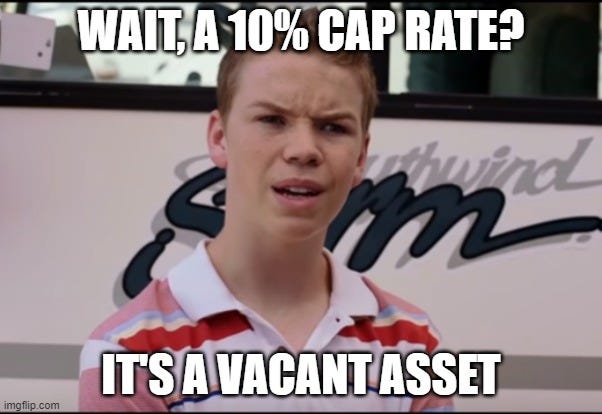4 reasons why cap rates are misleading
Be mindful when analyzing/comparing cap rates
Welcome back to LP Lessons! Three notes:
Last paid post: Third LP Investment Pillar: Property (Valuation and Business Plan)
Last free post: Friday’s LP Investing Digest
Announcing LP Stories:
I’ll start to share both positive and negative syndication stories right here on Substack through the podcast (audio) feature.
If you or someone you know did extremely well (or lost a lot of money) through a syndication, please reply to this email
I will keep both the LP and the GP anonymous
4 reasons why cap rates are misleading
Last week, I promised to write about cap rates in the context of valuation.
A lot can be said about this topic, but if there’s one thing you learn today let it be this: most people rely on cap rates too much when evaluating LP investment memos.
4 reasons why cap rates are misleading:
length of lease
creditworthiness of tenant
diversification of lease stream
in place vs market rent
First, some background:
Capitalization rate (or "cap rate") = Net Operating Income (or NOI) / Purchase Price.
There are some variations on this such as Unlevered Yield on Cost, which I will write on in the future.
Let’s dive in:
1) length of lease
You see "11% cap" on LoopNet and get excited.
What's wrong?
Cap rates aren't created equal and you realize that there's only a year left on the lease.
In other words, this 11% cap rate isn't comparable with an 11% cap rate with 10 years remaining on the lease, since there's lease up (finding a suitable tenant) and TI (funding dollars into the building to attract a tenant - acronym for Tenant Improvements) risk within the next year.
Since it’s unclear when you’ll find a tenant, carrying costs upon vacancy need to be vetted deeply (property taxes, insurance, and other costs that the landlord has to continue paying despite having no income)


